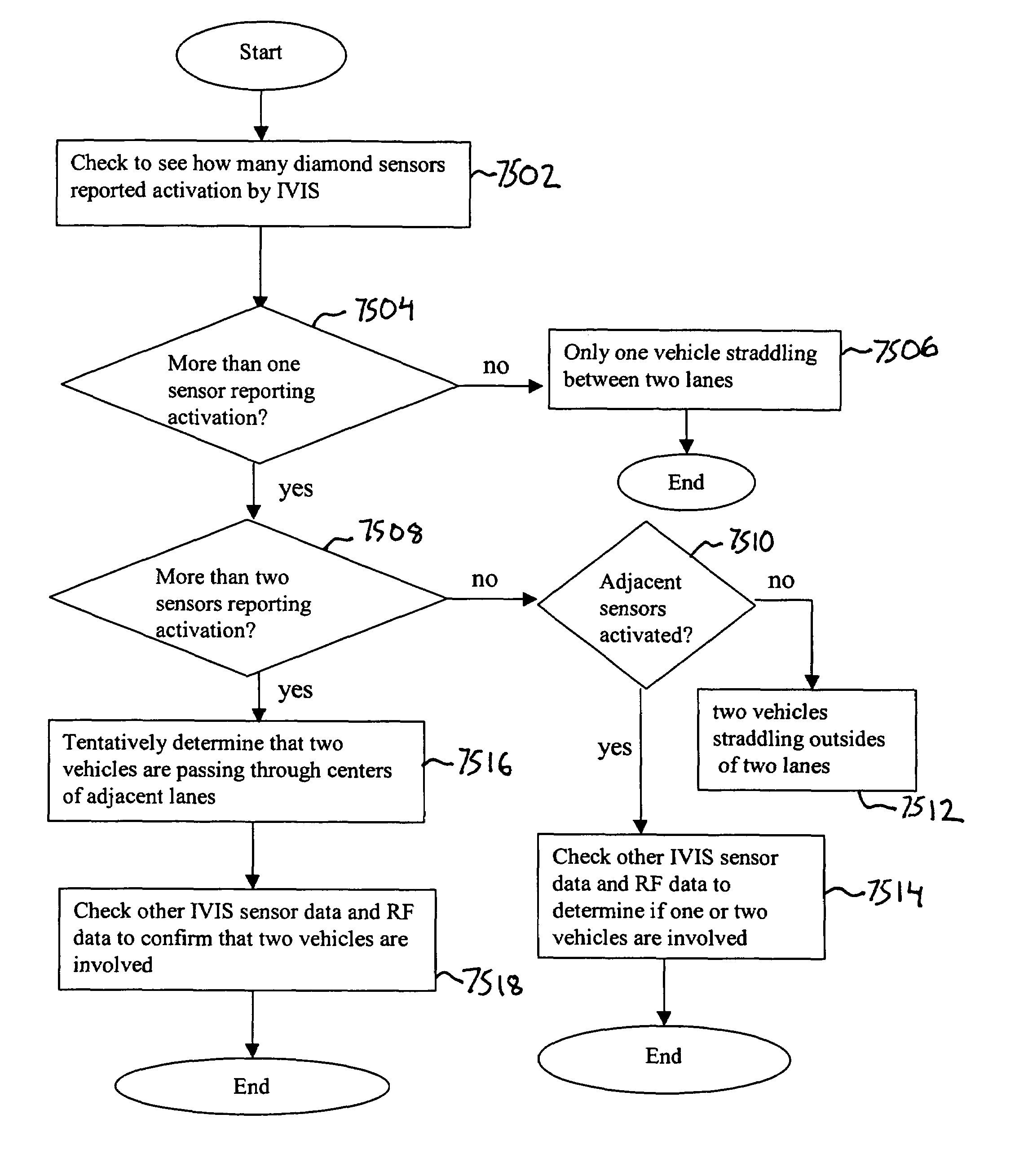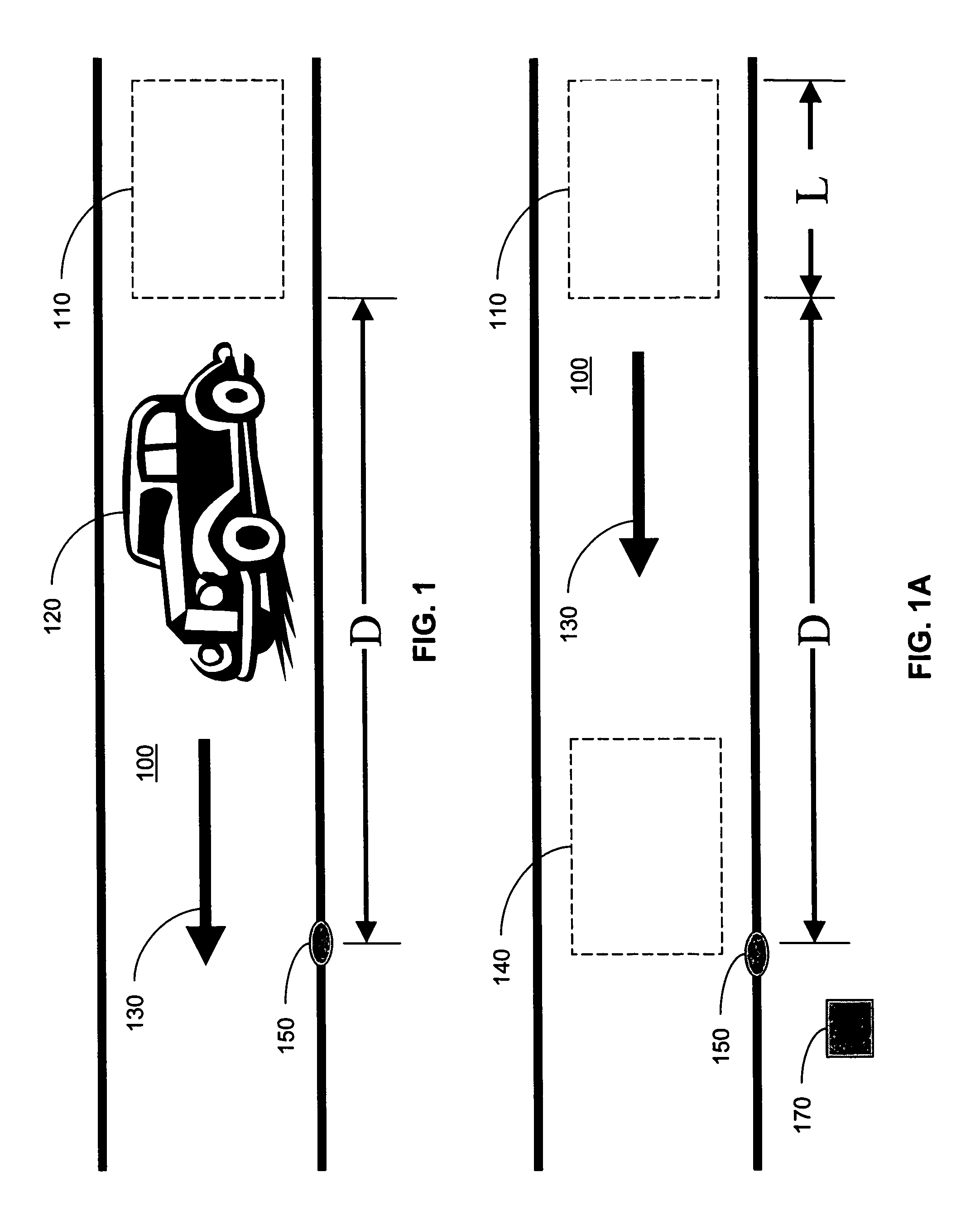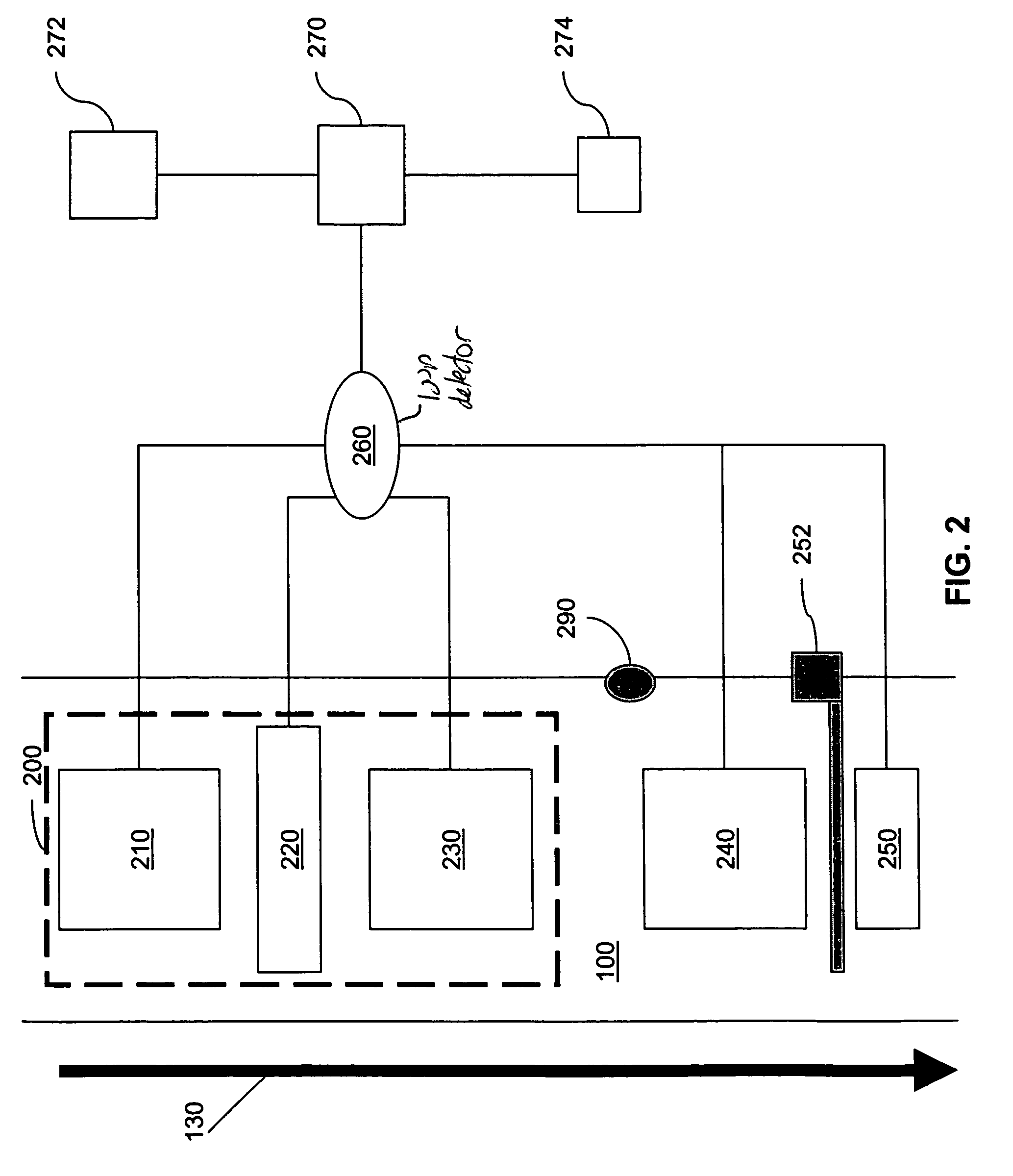Multiple RF read zone system
a read zone and multi-rf technology, applied in the direction of vehicle position/course/altitude control, process and machine control, instruments, etc., can solve the problems of not addressing the potential for errors when an attendant makes, and not addressing the ability to properly classify all transactions, which is the problem of utilizing attendants to collect fares
- Summary
- Abstract
- Description
- Claims
- Application Information
AI Technical Summary
Benefits of technology
Problems solved by technology
Method used
Image
Examples
example no.1
Example No. 1
[0252]Plot 3300 shown in FIG. 33 illustrates the detection of an automobile. The time that the front wheels of the automobile were detected occurred between point 3302 (where x1=228 and y1=80078) and point 3304 (where x2=274 and y2=80104) on plot 3300. This represented a detection sample length that was 253 milliseconds long (i.e., (x2−x1) multiplied by 5.5) and a change in frequency of 26 hertz (i.e., y2−y1). The time that the rear wheels of the car were detected occurred between point 3306 where x3=348 and point 3308 where x4=390 on plot 3300. This represented a sample length of 227 milliseconds and a frequency change of 33 hertz. [can't find any reference to this being changed in a previous application].
example no.2
Example No. 2
[0253]Plot 3310 shown in FIG. 33A demonstrates the detection of a smaller car with a lower ground clearance that passed over the same ferromagnetic loop discussed in Example No. 1. As shown on plot 3310, the first wheel was detected between points where x1=830 and x2=928, with a sample length of 539 milliseconds and a frequency change of 35 hertz. The second wheel was detected between points where x3=1214 and x4=1317, with a sample length of 566 milliseconds and a frequency change of 38 Hertz. The eddy currents created from the chassis were detected between points where x2=928 and x3=1214, which had the opposite effect, which lowered the frequency by 23 hertz.
example no.3
Example No. 3
[0254]Plot 3400 shown in FIG. 34 demonstrates the detection of the wheel assemblies of a pickup truck traveling at 10 mph over the same loop. The front wheel assemblies were detected at the between points where x1=1795 and x2=1850. This represented a sample length of 303 milliseconds for the front wheel assembly. The rear wheel assemblies were detected at the time between points where x3=1954 and x4=2011. This represented a sample length of 314 milliseconds for the rear wheel assembly.
[0255]In plots shown in FIGS. 35-38, the ferromagnetic loop used to detect the vehicle was 10 feet wide by 28 inches long. The ferromagnetic loop used had diagonal turnings with equal spacing. Information associated with the vehicle was collected by the ferromagnetic loop after the vehicle stopped prior to traveling over the loop and then proceeded to move over the loop. During the vehicle detection period, the acceleration of the vehicle was reflected in the decreasing sample lengths of t...
PUM
 Login to View More
Login to View More Abstract
Description
Claims
Application Information
 Login to View More
Login to View More - R&D
- Intellectual Property
- Life Sciences
- Materials
- Tech Scout
- Unparalleled Data Quality
- Higher Quality Content
- 60% Fewer Hallucinations
Browse by: Latest US Patents, China's latest patents, Technical Efficacy Thesaurus, Application Domain, Technology Topic, Popular Technical Reports.
© 2025 PatSnap. All rights reserved.Legal|Privacy policy|Modern Slavery Act Transparency Statement|Sitemap|About US| Contact US: help@patsnap.com



